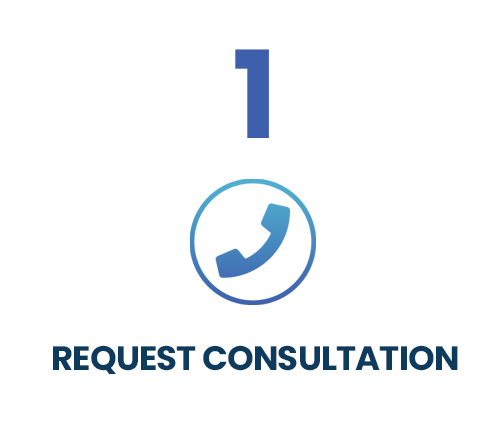Your burgeoning SEO campaign is finally seeing the results you’ve been hoping for and you’re noticing a surge in traffic, increased engagement, and superior SERPs. Now, your goal is to maintain your forward progress and continue raising the bar for your brand.
Our creatives and web developers have teamed up to provide you with a best-in-class website, our content strategists are publishing SEO content that your target audience finds compelling, and our digital marketing director is providing you with real-time updates every step of the way.
What’s next?
Once you launch an SEO campaign, there’s really no telling when it will end. SEO is fluid and continuous. If you spent the better part of the last few years building your case for Google’s search algorithm, you don’t want to have your headway undone by apathy or an inability to continuously produce spellbinding content.
Meeting your SEO objectives is just the beginning. You already have resources invested in an ongoing content campaign; why not invest in repurposing your content to boost your brand’s strengths in other areas? Existing content can be utilized in creative ways to produce captivating visuals for your site and interactive resources for your target audience while simultaneously filling out your social media and email marketing campaigns with more substance.
As the title states: written content is worth more than its word count. Our agency understands how valuable every piece of content is to your SEO campaign. Our content strategists spend extra time researching the best resources and tailoring their writing to your target audience’s preferences and needs. When you produce top-tier content, you can adapt it to other mediums to spread your brand’s message. If you want to get the most out of your content, you should consider doubling down on your commitment to SEO by expanding your campaign to include content repurposing.
Give Your Old Content a New Purpose
“Ask not what your country can do for you, but what you can do for your country.” – John F. Kennedy
When you read the quotation above, was your first thought: “This is outdated. Who cares what John F. Kennedy said in 1961?” Of course not! Sure, the quote might be over a half-century old, but President Kennedy’s content is still relevant.
How was JFK able to future-proof his content for more than 50 years post-mortem? As a president, the things he said were substantive and important, not to mention well-researched and backed by the academic community. At Leverage Digital, every piece of SEO content we produce is subjected to the same rigorous standards. We never publish without verifying our sources and we don’t make assumptions.
If you want your brand to succeed in the future, you will need content that can outlast your competitors and remain relevant for years to come. However, this is only possible if your ongoing content campaign is producing high-quality content from the beginning.
Are you dedicated to establishing your brand as a thought leader in your respective industry? Our content strategists work with our creatives to enhance your brand’s SEO strategy with SEO content that drives creativity across an array of platforms and applications.
Promoting Written Content with Curated Visuals on Social Media
The goal of your SEO campaign was to improve your brand’s SERP visibility thereby increasing traffic to your site, but your auxiliary marketing campaigns, like social media, will influence your site’s traffic, too. Promoting your SEO content through social media platforms like Facebook, Instagram, Twitter, and Pinterest can help drive engagement with your target audience. This can help increase traffic to your website as users follow backlinks to interact with your content.
There’s only one caveat — these platforms largely rely on visuals to attract your target audience. How can you promote your written content without relying on boring stock images that fail to charm users? The trick is to create visuals that tie back to your article in an interesting way. In other words, promote the information from your SEO content that is the most valuable to your target audience.
We’ll use one of our own articles, “How To Create A Content Marketing Strategy From Your Existing SEO Content” to briefly illustrate how written SEO content can be repurposed into visual content to promote itself.
[metaslider id=”6499″]
You can utilize interesting quotations from your SEO content to create a compelling visual that connects directly to the information from your content. Alternatively, you can propose a question or call to action that links to your article or generates buzz about your topic.
Boost Your Presence in Other Campaigns
You can utilize visual content inspired by your written SEO content as a promotional vehicle for your content, but that’s only useful when you’re publishing new content. What about your older SEO content?
Have you ever noticed that the most successful social media accounts post compelling content regularly? You’re probably wondering how they manage to upload high-quality content so frequently. Here’s the secret: plan ahead and plan smart.
At the most basic level, recalling old content using hashtag campaigns like “Throwback Thursday” (#tbt) or “Flashback Friday” (#fbf) gives you a legitimate reason to reuse old content. Similarly, by focusing on certain themes during a designated time period (e.g., Valentine’s Day, Christmas, Easter) you can funnel existing SEO content into your ongoing content campaign to fill it out and provide more value for your existing and prospective customers.
Ideally, you will outfit your existing SEO content with new promotional materials to prime it for social media, an email marketing campaign, or a featured position on your website’s homepage or blog.
For example, you can beef up a weekly or monthly newsletter with existing, relevant SEO content. Similarly, if your brand has a tendency to go dark on social media because you lack content, consider utilizing existing SEO content to give your target audience a reason to return to your website.
Embrace Thought Leadership with Leverage Digital
At Leverage Digital, we know that your brand’s success depends on your SEO strategy and ability to optimize your digital imprint, but we also understand the value of intangibles like consistency, design, and most importantly, thought leadership.
Being a thought leader helps raise your brand to the next level. Once you have achieved success in this area, your brand will be providing the blueprint for your rivals which means every move you make will inspire others and direct users to your brand.
However, the only way to become a thought leader in your respective industry is to become the authority on all matters pertaining to your brand. In other words, you have to remain vigilant of industry-related news and continuously produce content that pushes the envelope.
Whether you focus on publishing new content, repurposing old content, or combining both strategies to pump up your overall output, to be considered a thought leader, you need the capacity to develop and publish enough content to outperform your competition. For most brands, this idealistic goal is impossible without partnering with a reputable digital marketing agency like Leverage Digital.
A successful SEO strategy is built around a handful of established principles — ongoing content, thoroughly researched keywords, etc. — but there’s always room for creativity and innovation in the world of digital marketing. One-and-done publishing ensures that your SEO content is giving you the organic growth you desire, but on a B2C level, you want to be certain that your target audience is engaged. Our award-winning digital marketing agency combines comprehensive statistics tracking and thoughtful, creative design to provide measurable results that look as good as they perform.









